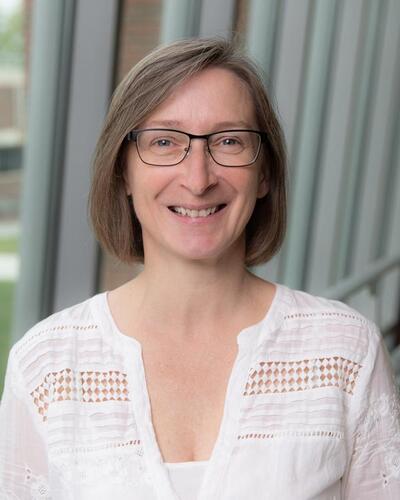Amy Sheldon currently serves as the special assistant to the provost. She served briefly as the interim provost and vice president for academic affairs, August 25 through October 26, 2025. She is the founding dean of the school of arts and sciences, having served in that role from mid-January 2024 through mid-July 2025.
Amy has been a member of the Geneseo faculty since 2000.

Curriculum Vitae
Education
Doctorate: Geological Sciences, University of Utah; 2002.
Master of Science: Geology University of Tennessee at Knoxville, 1995.
Bachelor of Arts: Geological Sciences, SUNY Geneseo; 1990.
Employment
2024-Present, Professor, SUNY Geneseo
2015-2024, Associate Professor, SUNY Geneseo
2002-2015, Assistant Professor, SUNY Geneseo
2000-2002, Instructor, SUNY Geneseo
1995-2000, Graduate Research Assistant, University of Utah
1994-1995, Post-Graduate Research Participant, Oak Ridge Institute for Science and Education
1991: Geologist, GS5, U.S. Geological Survey, Altemonte Springs, Florida.
Affiliations
Rochester Academy of Science
American Geophysical Union
National Ground Water Association
Geological Society of America
Sigma Gamma Epsilon
Convention Assistant for the Rochester Academy of Science Annual Meeting, Geneseo, NY, Fall 2007.
NSF Grant Reviewer
Peer Reviewer
Publications
Sheldon, A. L., Solomon, D. K., Poreda, R. J., and A. Hunt. 2003. Radiogenic Helium In Shallow Groundwater Within a Clay Till, Southwestern Ontario. Water Resources Research, v. 39, no. 12 1331- 1342.
Manning, A.H., Solomon, D. K., and A.L. Sheldon. 2003. Applications of a Total Dissolved Gas Pressure Probe in Ground Water Studies. Ground Water. v. 41, no. 4, 440-448.
Vacco, D., 2001. Geochemistry of a modern anoxic environment; Buck Run, Mt. Morris, SUNY Geneseo Undergraduate Journal of Science and Mathematics, SUNY Geneseo, NY, v. 2, no.1, p. 35-42. (I served as the Faculty Advisor and co-author, but the Journal published only student authors.)
Nativ R., A. Halleran, and A. Hunley, 1997. Evidence for Ground-Water Circulation in The Brine-Filled Aquitard, Oak Ridge, Tennessee, Ground Water, 35, v. 4, 647-659. (Halleran was my maiden name.)
More About Me
Research Interests
- Analysis of CFC sorption in low-carbon containing sedimentary aquifers. NSF-funded project. PI and Co-investigator: R. Allen-King at SUNY at Buffalo. Undergraduate research students supported: Neil Swanson and Dana Smith.
- POPs: Power of physical sciences. Creating science curriculum to increase the number of females entering the physical sciences. NSF MSP-Start funded project. Co-investigators: K. Fletcher (Physics), D. Farthing (Geology), K. Rommel-Esham (Education).
- Extended Fieldtrips as an Integral Part of a Seminar Course: A Capstone Experience for Undergraduates. This project is addressing assessment of the program for publication. Co-authors Farthing, D.J., Giorgis, S., Hatheway, R.B., Laabs, B., Over, D.J., and R.A. Young.
Interests
- Environmental Geology
- Hydrogeology
Classes
-
GSCI 347: Groundwater Hydrology
The study of groundwater and of those the principles of fluid flow in porous media that govern the flow of groundwater through the subsurface. The hydraulic properties of groundwater systems and water wells, the relationships between groundwater and surface water other geological processes, the development of groundwater resources, water quality, recharge of groundwater, water quality, groundwater contamination, and solute transport are emphasized.